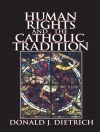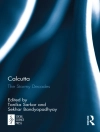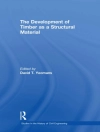Grand palaces of culture, opera theaters marked the center of European cities like the cathedrals of the Middle Ages. As opera cast its spell, almost every European city and society aspired to have its own opera house, and dozens of new theaters were constructed in the course of the ‘long’ nineteenth century. At the time of the French Revolution in 1789, only a few, mostly royal, opera theaters, existed in Europe. However, by the turn of the nineteenth and twentieth centuries nearly every large town possessed a theater in which operas were performed, especially in Central Europe, the region upon which this book concentrates. This volume, a revised and extended version of two well-reviewed books published in German and Czech, explores the social and political background to this ‘opera mania’ in nineteenth century Central Europe. After tracing the major trends in the opera history of the period, including the emergence of national genres of opera and its various social functions and cultural meanings, the author contrasts the histories of the major houses in Dresden (a court theater), Lemberg (a theater built and sponsored by aristocrats), and Prague (a civic institution). Beyond the operatic institutions and their key stage productions, composers such as Carl Maria von Weber, Richard Wagner, Bedřich Smetana, Stanisław Moniuszko, Antonín Dvořák, and Richard Strauss are put in their social and political contexts. The concluding chapter, bringing together the different leitmotifs of social and cultural history explored in the rest of the book, explains the specificities of opera life in Central Europe within a wider European and global framework.
Cuprins
Abbreviations
List of Illustrations
Foreword
Part One: Introduction
Part Two: The Royal Theater in Dresden
1. Organization and Control of the Royal Theater
2. Constructing National Culture
3. Europeanization and Musical Modernism
Part Three: The Polish Theater in Lemberg
4. Social Foundations
5. Provincial Opera
Part Four: The Czech National Theater in Prague
6. Launching the National Theater Project
7. A Theater for All Classes
8. The Opera Nation
Part Five: Comparison, Cultural Transfers, and Networks
9. Opera and Society
10. Nationalizing Opera
11. Cultural Exchanges and Europeanization
Bibliography and Sources
Acknowledgments
Index
Despre autor
Philipp Ther is a professor of Central European history at the University of Vienna and has published a number of well-reviewed books and articles on cultural history and history and music, including
In der Mitte der Gesellschaft: Operntheater in Zentraleuropa 1815 (Oldenbourg Verlag, 2006), on which is based. He received his master’s degree from Georgetown University and Ph D in history from the Free University of Berlin. From 2007 to 2010, he was a professor of European history at the European University Institute in Florence, Italy.












